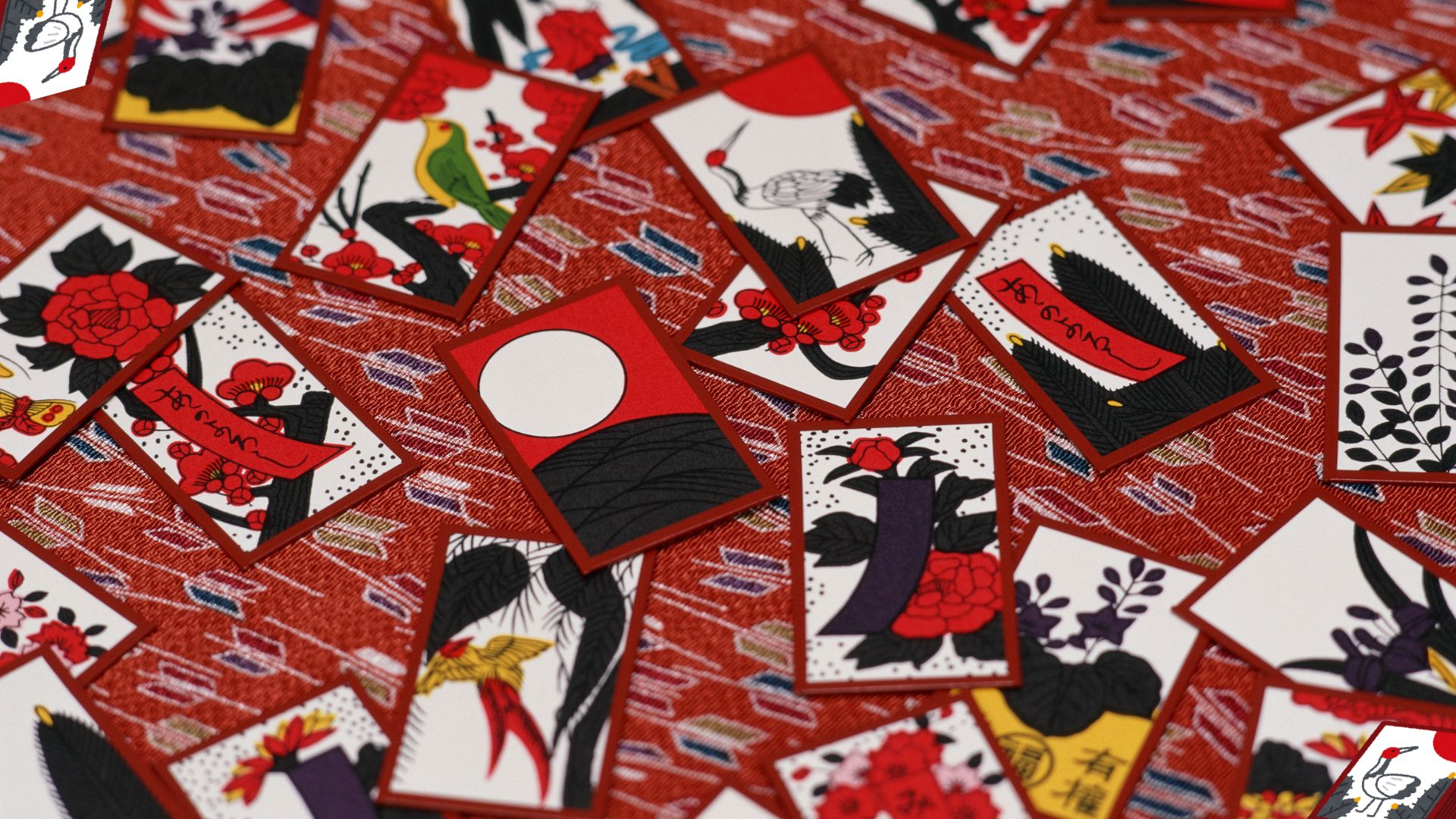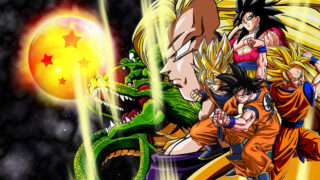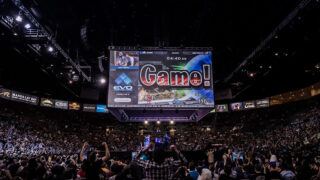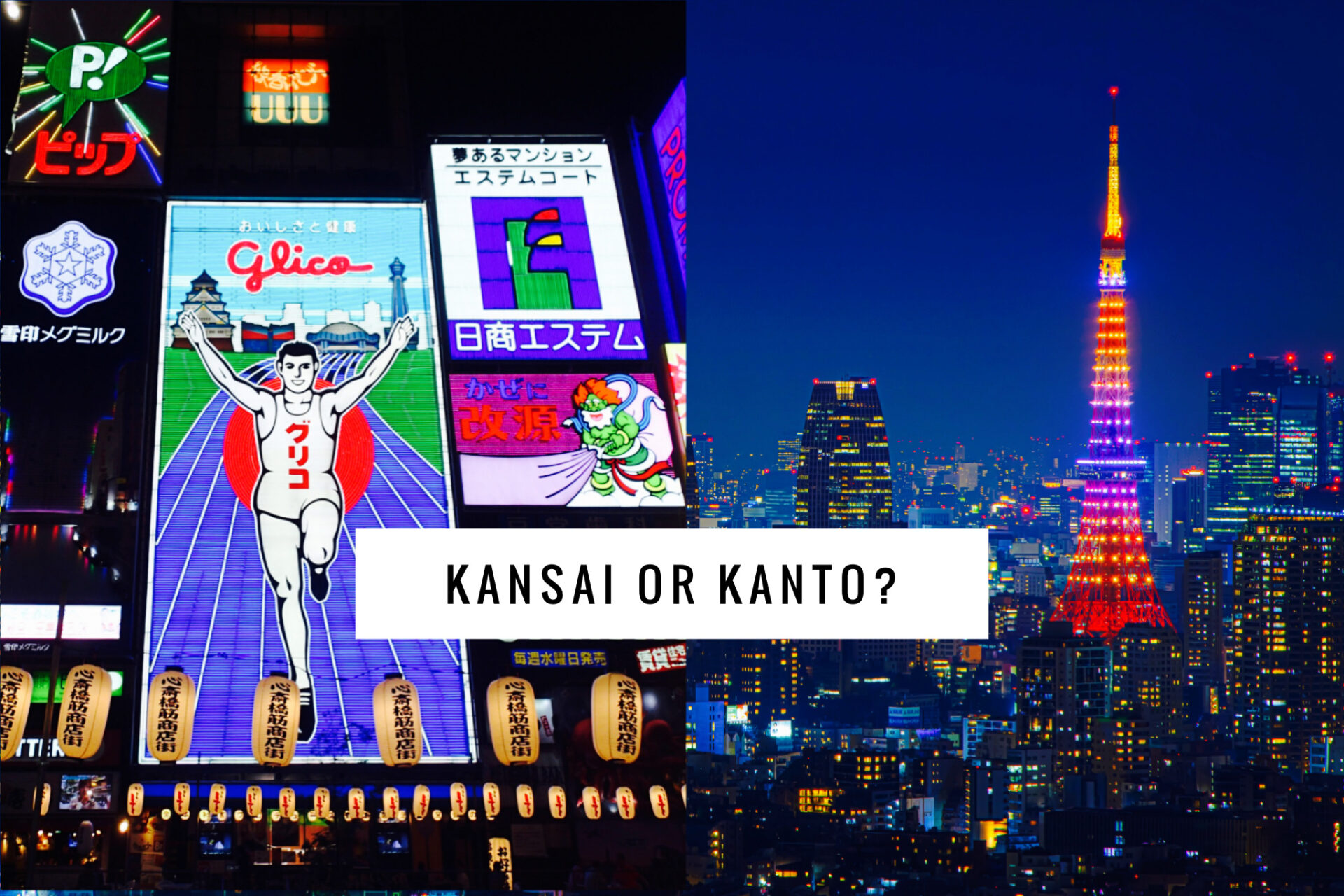Prepare to be swept away into the exhilarating realm of Japanese gaming, where traditional strategies collide with contemporary thrills! If you are planning to visit Japan, immerse yourself in the pulse-pounding world of popular Japanese board/card games and strategic warfare! These aren’t just games; they’re portals into the very essence of Japanese culture. Unleash your inner competitor and unlock the secrets of each game, as you navigate the dazzling intersections of tradition and modernity that define the gaming scene in this captivating nation. This article introduces you to a wonderful world of Japanese board/card games!
【Card Games】
1. Menko
Menko may not be seen on street corners anymore, but decades ago it was an enthusiastically popular game among children. Each card has a cool picture or photograph on it, which probably contributes to its appeal. Unlike the common image of card games, this one has an aggressive element that involves a lot of physical activity. The basic rules of the game are simple: you knock down your own menko and flip over your opponent’s menko. However, this simplicity can conversely lead to heated battles. Menko, which reminds us of the passionate moments of childhood, is a precious reminder of a part of Japanese play culture. Please refer to the link below for detailed information on how to play menko.
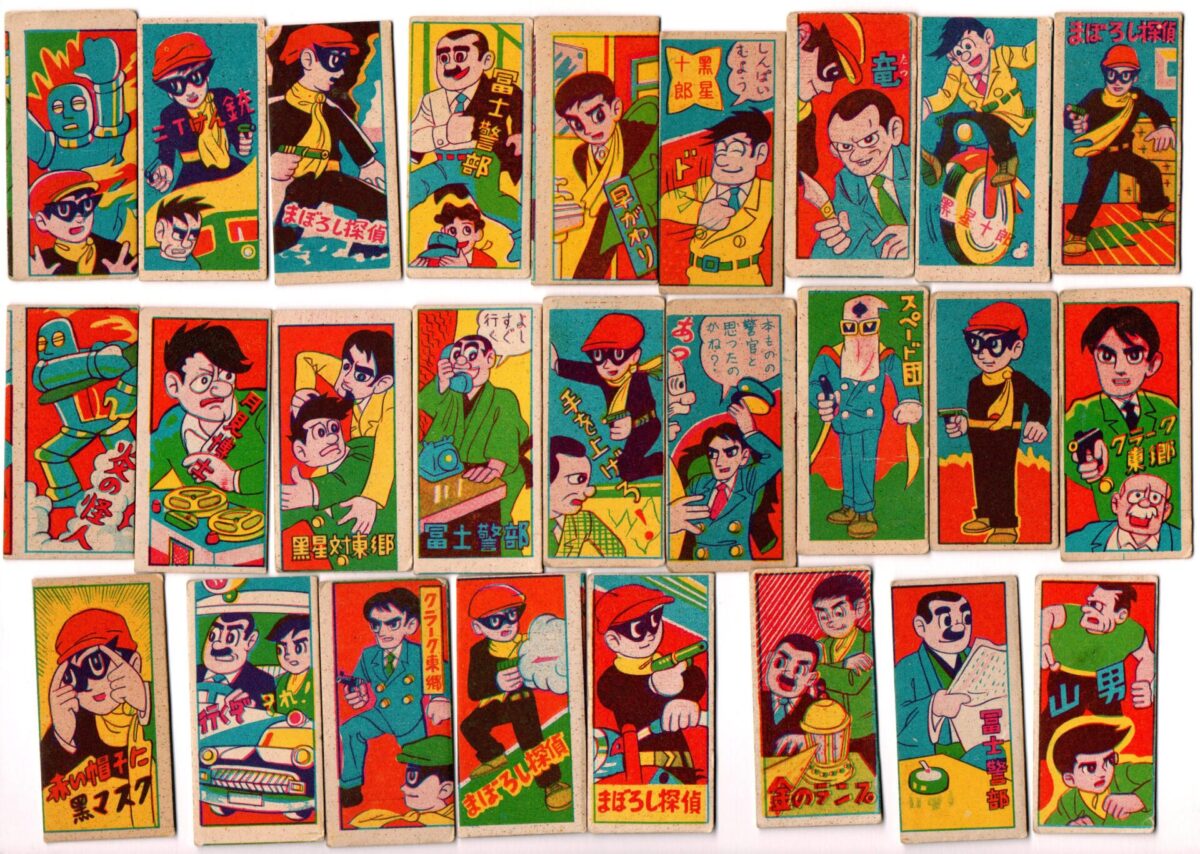
2. Hanafuda
Hanafuda is a type of karuta that is a concentration of the unique beauty and culture of Japan. Each card symbolizes the 12 months of the year and elegantly depicts flowers, birds, winds, and the moon. There are a total of 48 cards (12 months x 4 cards), and many ways of playing the game seek to match these beautiful patterns. The seasonal patterns remind us of Japanese traditions and culture, especially during the New Year’s holiday, when the splendor of the game is even more pronounced. Through Hanafuda, please experience the joy of playing while experiencing the beauty of each of the four seasons in Japan.
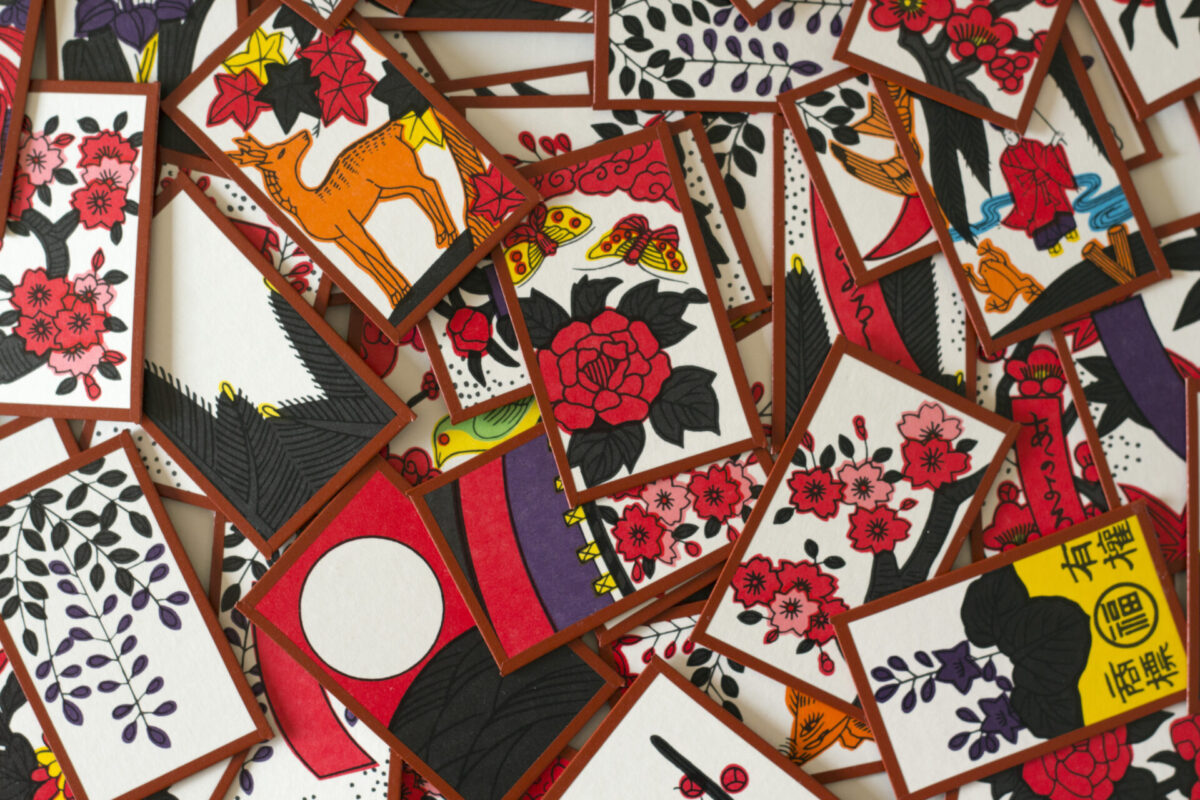
3. Iroha Karuta
Iroha Karuta, a widely popular game in Japan, was introduced from Portuguese “carta” during the Azuchi-Momoyama period and has since taken root in Japan as a form of entertainment. There are various types of karuta, but “iroha karuta” is particularly well known. The cards feature beautiful illustrations that correspond to tanka poems, and the game involves picking up the cards that match the poems being read aloud. These cards often reflect traditional Japanese proverbs. Iroha Karuta is a fascinating card game that allows players to enjoy and learn about Japanese literature and knowledge, and is a popular form of entertainment that allows players to share a good time while experiencing history and language!
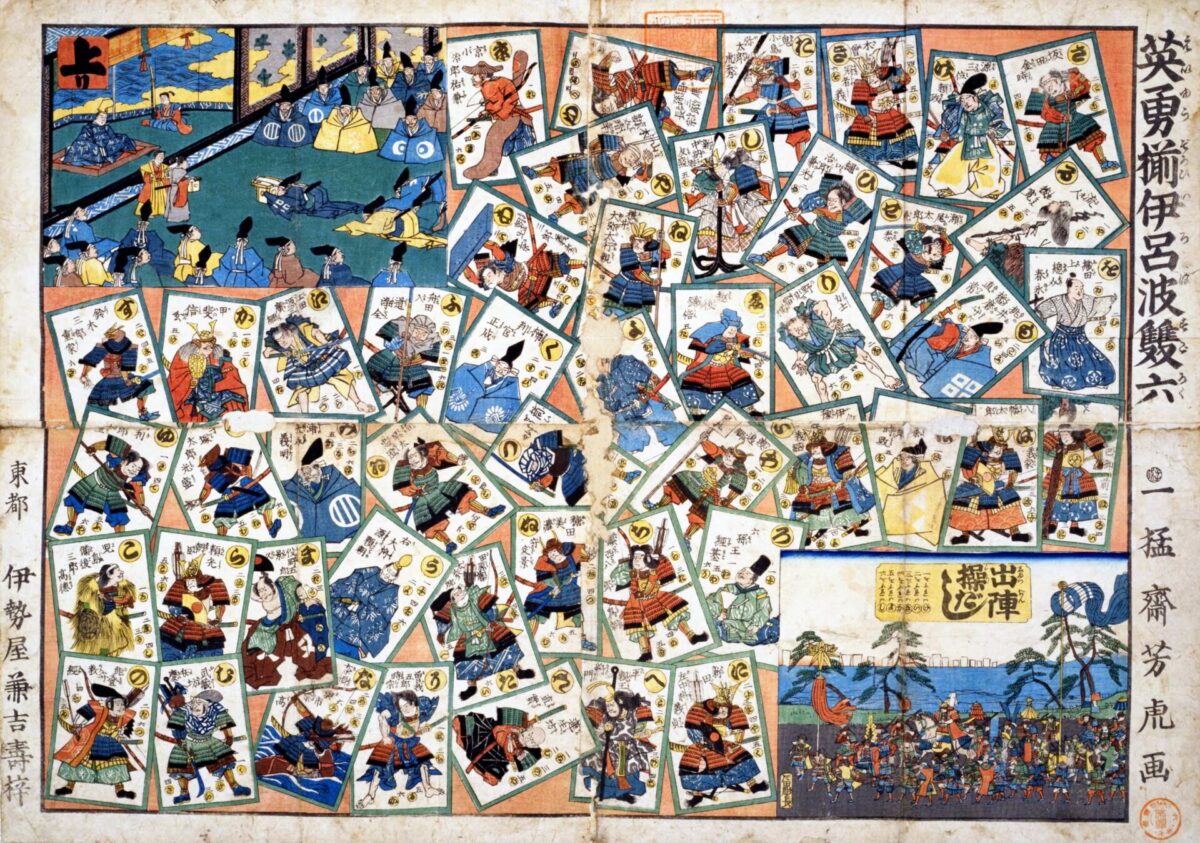
4. Daifugō
Daifugo is a card game that is widely popular in Japan. Originating in Tokyo in the 1970s, the game’s short history has contributed to the spread of local rules that vary from region to region. This feature brings diversity and flexibility to the game, offering new strategies and an exciting playing experience for players that is everchanging.
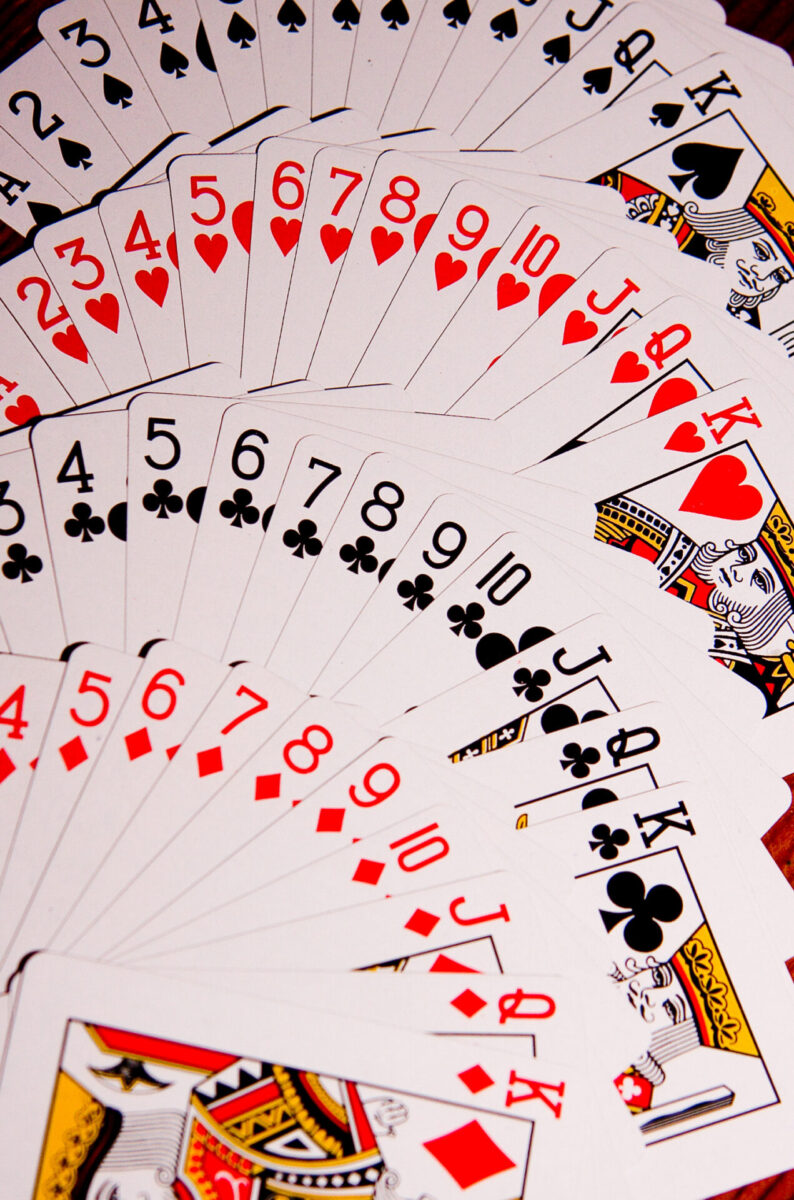
5. Hyakunin-Isshu Karuta
The Ogura Hyakunin Isshu is a collection of waka poems compiled in the early Kamakura period in the first half of the 13th century, and it contains poems of history and elegance. The “Hyakunin Isshu Karuta” was created from this anthology and contains waka poems composed by 100 poets. Unlike regular karuta, the game is played in a unique way; players compete quickly to find and take the cards for the lower verses while the reader recites the upper verses. In addition to the beauty of the elegant waka, this game has a unique charm that tests concentration and quick judgment. We invite you to explore the joy of the game that lies behind the wonderful waka.
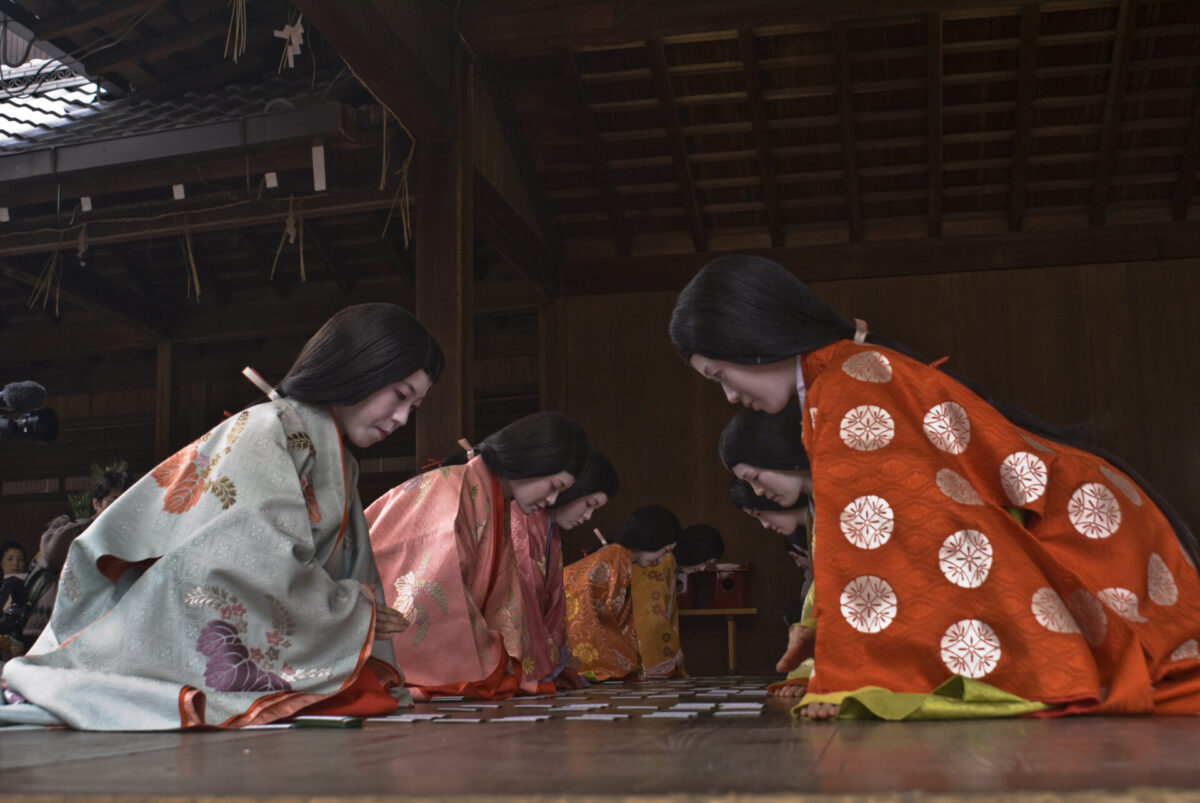
【Board Games】
1. Shogi
Shogi is a Japanese board game that has long been popular in Japan and has characteristics similar to Western chess. Shogi uses pieces, a shogi board, and a piece stand. It is characterized by its unique strategy and the deep gameplay created by the movements of the pieces. Shogi has a total of nine different types of pieces, each with different moves. The objective of the game is to take the opponent’s Ōsho (King piece), and the victory condition is to achieve this. Shogi is a game of precise tactics and strategy, and offers an interesting reflection of Japanese culture and history
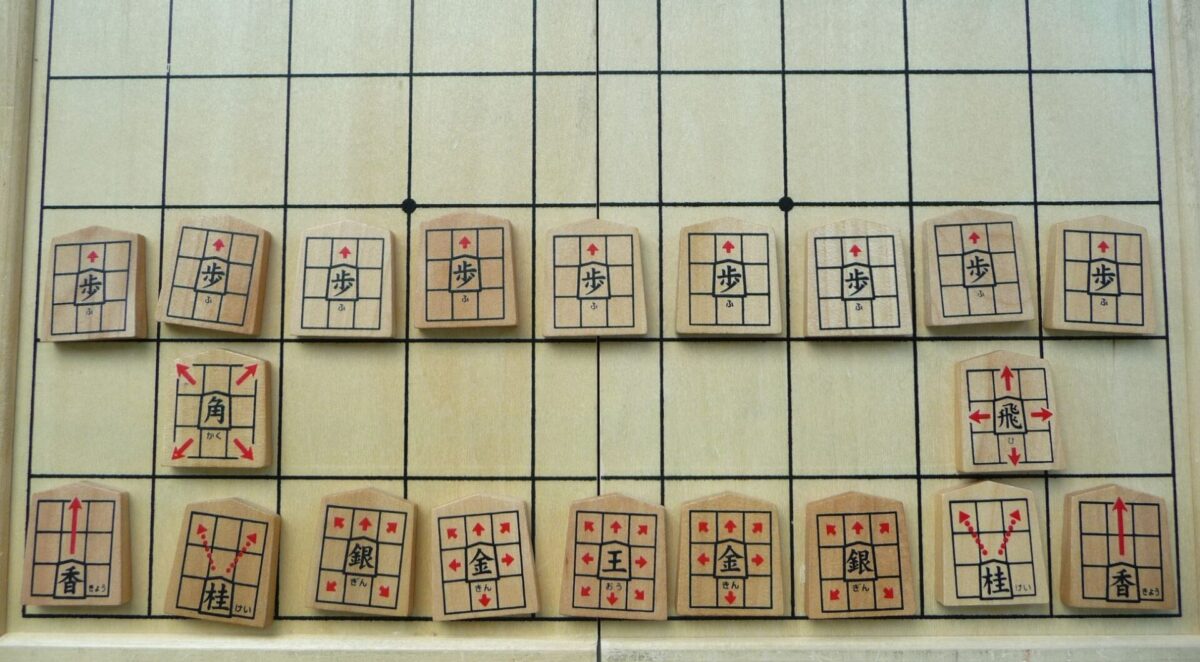
2. Go
Go is a profound indoor game in which two players, one controlling the black stones and the other the white stones, take turns placing stones on the board and compete over the size of the enclosed area. The origin of this game can be traced back to the emperors of ancient China, but its exact origin is unknown. It is said that it was originally used as a means of divination, such as witchcraft. The unique aesthetic and strategic nature of Go consists of only five rules, and its simplicity has attracted Go enthusiasts of a wide age range, from under 7 or 8 years old to over 80 years old. With its ancient history and background in divination, Go has been enjoyed by a wide range of people for its wisdom and strategy over many years.
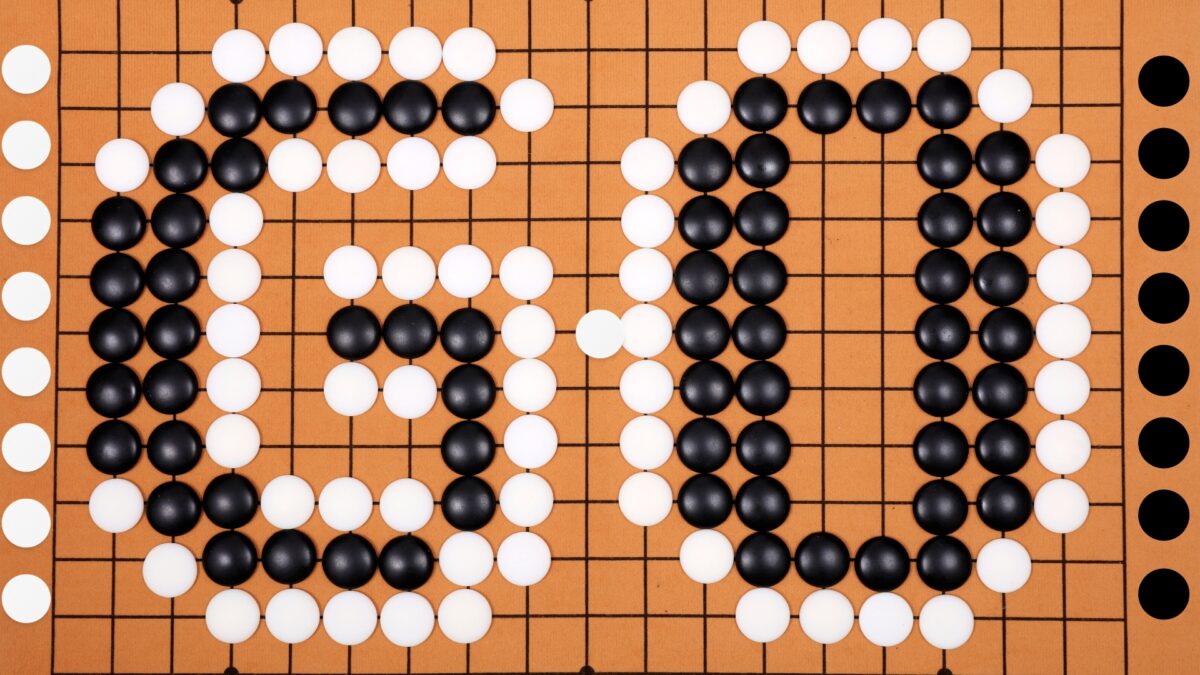
3. Sugoroku
Sugoroku (backgammon) is a board game in which players roll a dice and move the pieces on a piece of paper to advance as many dice as the number of dice rolls out, eventually reaching a goal. The game is said to have originated in ancient India or ancient Egypt. Sugoroku was introduced to Japan via China and spread as a game for the nobility and other upper class between the 5th and 6th centuries. In modern times, it has become a staple Japanese board game enjoyed by families during special occasions such as New Year’s Day. Because of its history and familiar rules, it is loved by many people and provides a fun time.
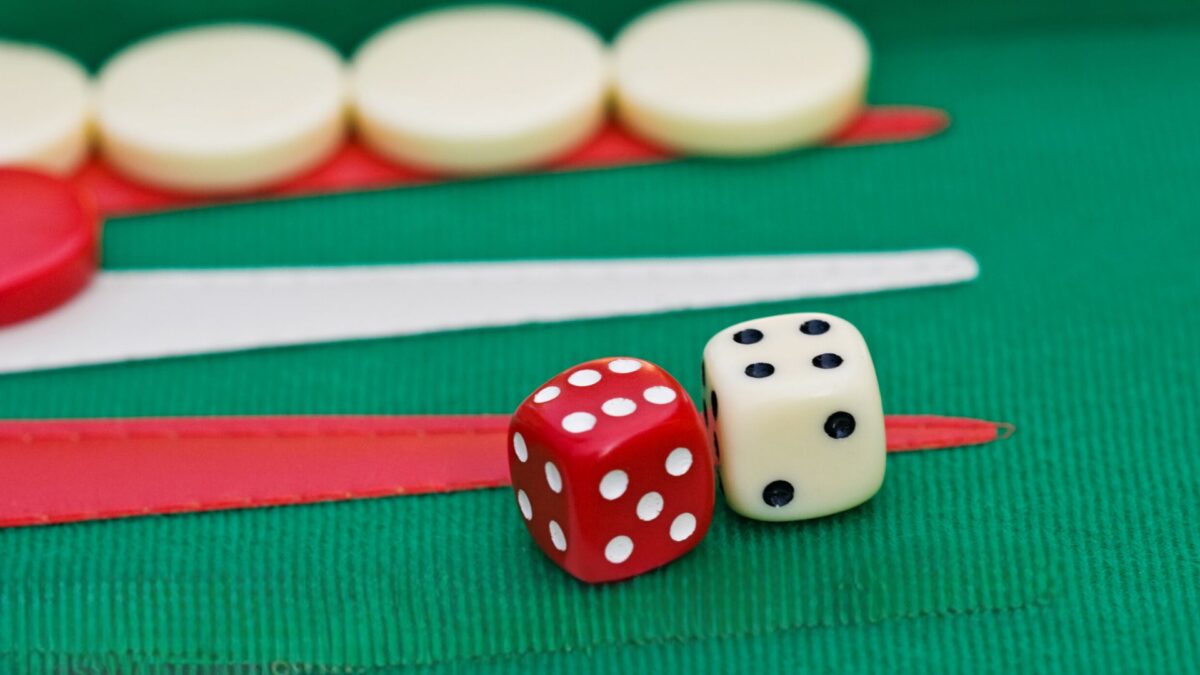
4. Ponjan (Donjara)
Ponjan (Donjara) is a novel game in which players skillfully combine the same patterns by making full use of the pies they have, and compete for points according to the sets they make. Originally, the game was arranged based on mahjong so that even children could enjoy it, and it can be easily played by 2 to 4 players. An attractive element of the game is the tiles that are illustrated with cartoon and video game characters, so children can enjoy the game with enthusiasm. With its daring and strategic play, Ponjan has been spreading the appeal of new board games, with exciting competitions among family and friends.
5. Othello
Othello is a strategic game in which the opponent’s stones are skillfully pinched and turned over, and the side with the greater number of stones ultimately wins. The game originated in Mito, Ibaraki prefecture, and owes its name to “Othello,” one of Shakespeare’s four great tragedies. With the thrill of instantly changing battle conditions while manipulating the black and white pieces, Othello offers moments when a clever strategy and a single move can turn the tide of the game. The game demands simple yet sophisticated tactics, and playing against friends and family creates a competitive environment and exciting moments.
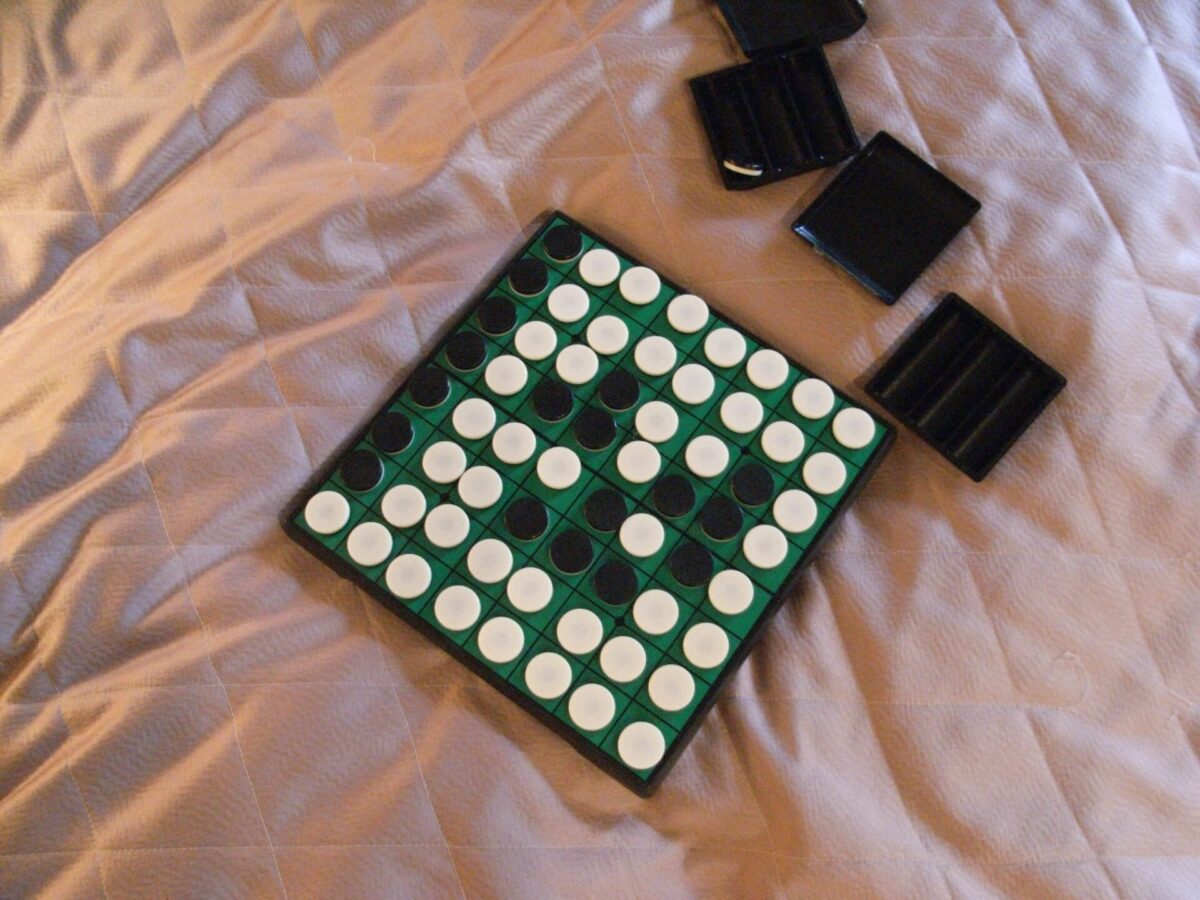
In this article, we have looked at several Japanese board/card games, which one are you going to play first? More than just entertainment, these games are a window into Japanese culture and history. New discoveries and excitement await you in this game world of strategy, art, and modern thrills. Enjoy a piece of Japan’s playful spirit, and discover the fascination of the country through these games. Your journey into Japan’s gaming universe awaits….Ready to play to win?
Japan Wonder Travel Tours
Japan Wonder Travel is a travel agency that offers guided tours throughout Japan.
From private walking tours to delicious Food and Drink tours, we can help you organize the best tours just for you! If you want to explore Japan and learn more about the history and backstories of each area you are visiting, our knowledgeable and friendly English speaking guides will happily take you to the best spots!
In addition, we can provide you with any assistance you may need for your upcoming trip to Japan, so please feel free to contact us if you have any questions or need some help!
▶Tokyo Tsukiji Fish Market Food and Drink Tour
Explore the most lively and popular fish market in Tokyo and try some of the local’s favorite street foods and sake with one of our friendly and knowledgeable English speaking guides!

▶Tokyo 1–Day Highlights Private Walking Tour (8 Hours)
There’s no better way to explore an area than taking a tour with a knowledgeable local guide. You will have the chance to learn about the history and interesting background stories of Tokyo, as well as discover some hidden gems which can be hard to do without a guide.

▶Mt. Fuji Day Trip Bus Tour from Tokyo
Experience the breathtaking views of Mt. Fuji by visiting the highlights of the area on our guided sightseeing bus tour! Departing from Shinjuku in central Tokyo, you can travel comfortably to all of the best spots in the area by bus.

▶Kyoto Private Full Day Walking Tour
On this full-day private tour of Kyoto, you will be able to see the highlights of Kyoto in just one day and at the same time develop a deeper understanding of both the culture of the area and Japan as a whole.
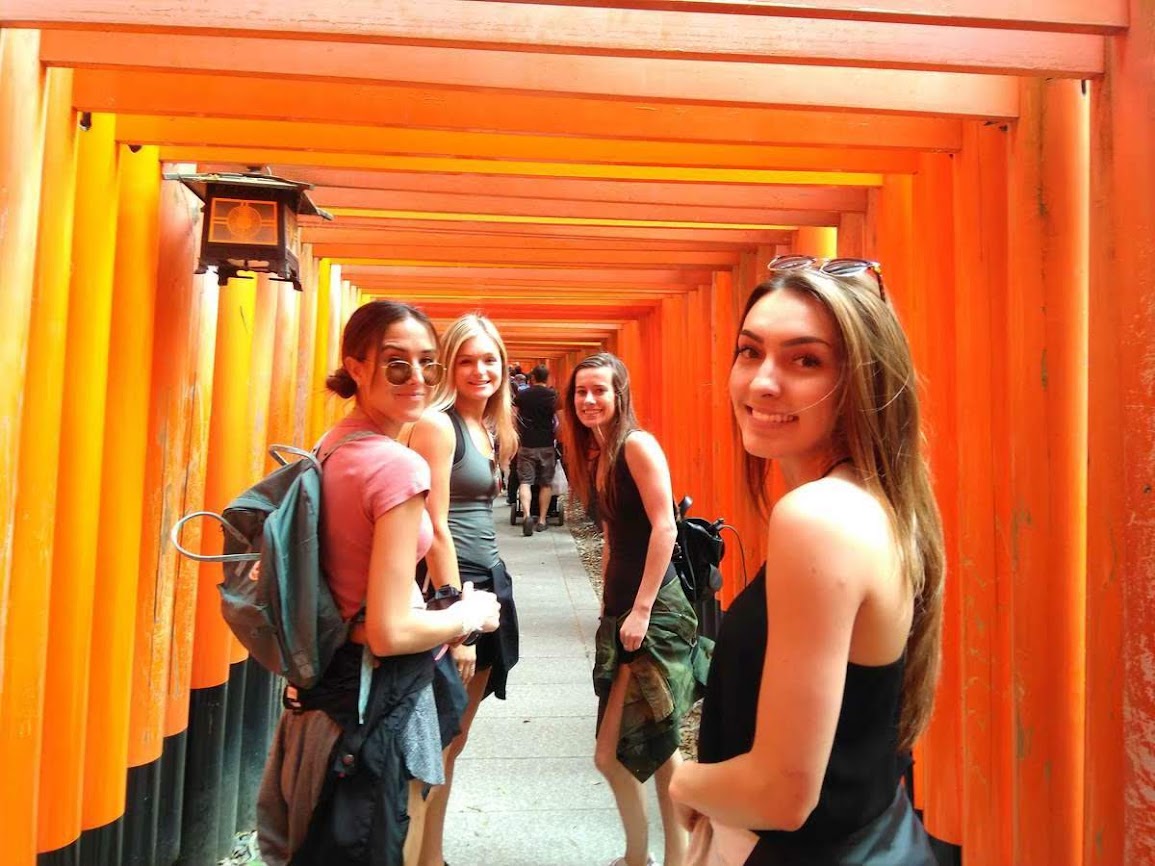
Follow us on Instagram, Facebook, Twitter, and TikTok for more travel inspiration. Or tag us to get featured!
Happy traveling!
